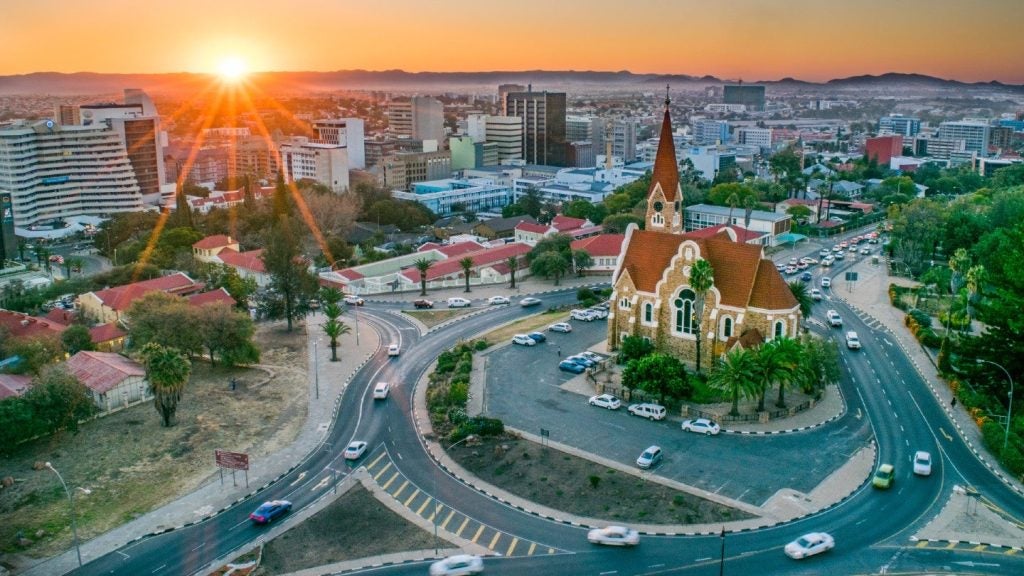
Against the backdrop of the global economic crisis, operating a business in any industry is a balancing act. However, industries dependent on discretionary spend such as travel and tourism are taking an even tougher blow, with optional outgoings being examined under the microscope.
For the hotel industry, this means suppressed demand and more vacant hotel rooms across the globe. The swine flu pandemic sweeping across the globe could also have a damaging impact on the travel and tourism industry as people postpone or cancel trips abroad.
Year-to-June results from STR Global reported double-digit declines for all world regions, with Europe suffering the most (in US dollars) and the Middle East experiencing the least dramatic declines.
Last year, the Middle East achieved its fifth consecutive year of double-digit RevPAR growth. 2009 tells a different story, as the economic downturn limits demand, yet at the same time a considerable amount of new room supply enters the region.
Even with this imbalance, the Middle East was the least-affected world region with RevPAR down 17.5% year-to-June 2009.
See Also:
The main culprit was occupancy, which fell 10.1%, while average room rates also saw declines, down 8.3%. Despite this contraction, hoteliers in the Middle East still achieved the strongest occupancy (63.2%), average room rates ($208) and RevPAR ($132) in the world and hotel performance in a few cities in the region is still booming over the same timeframe last year.
How well do you really know your competitors?
Access the most comprehensive Company Profiles on the market, powered by GlobalData. Save hours of research. Gain competitive edge.

Thank you!
Your download email will arrive shortly
Not ready to buy yet? Download a free sample
We are confident about the unique quality of our Company Profiles. However, we want you to make the most beneficial decision for your business, so we offer a free sample that you can download by submitting the below form
By GlobalDataBeirut continued to achieve the strongest RevPAR growth in the region and world, up a staggering 124.4% to $117 year-to-June 2009. Increased political stability helped the city’s hoteliers increase their occupancy 72.1% to 66.9%, while average room rates grew 30.3% to $175.
Further south in the Middle East, the coastal city of Jeddah in Saudi Arabia is thriving as a gateway city for Islamic pilgrimages to the holy cities of Makkah and Medina. Jeddah pulled up the regional average as RevPAR jumped 20.4% to $120.
Meanwhile, Abu Dhabi was one of the only other cities in the region that remained in positive territory, with 6.9% RevPAR growth to $253. Demand still outweighs new supply in the UAE capital, resulting in the highest occupancy (79.2%), average room rates ($319) and RevPAR in the Middle East.
On the flip side, Dubai is facing the challenge of decreased demand from some of its source markets in recession, as well as thousands of new rooms coming into the market. Hotel performance there pulled down the region’s performance, with a 35.9% drop in RevPAR to $177.
North America was the first region to slip into the red at the end of 2008, reporting a 1.6% decline in RevPAR and the lowest levels of RevPAR in the world at $65. Year-to-June 2009 RevPAR continued on its downward course and fell 19.3%.
This placed the region close behind the level of decline in the Middle East; however the region still achieved the lowest levels of RevPAR in the world at $54.
RevPAR in Mexico City was down 37.8% to $51 year-to-June 2009 suffering from depressed demand due to the economic downturn and negative publicity from gang-related violence.
In addition, the outbreak of swine influenza that hit the headlines in April will have had a negative impact on hotel demand in Mexico as international tour operators cancelled or postponed trips to the country. Heading north into the US, RevPAR in New York City experienced the largest drop in RevPAR in the US – down 32.5% to $144 as a result of occupancy falling 10.8% to 72.6% and a 24.4% drop in average room rates to $199.
Despite this, the Big Apple still achieves the highest average room rates and RevPAR in the US. Hotel performance in Washington DC pulled up the regional average and reported a minor 6.0% drop in RevPAR to $103 year-to-June 2009.
While occupancy fell 3.9% to 66.8%, average room rates fell 2.2% to $154. Hotels there benefited from the inauguration celebrations held for President Obama at the beginning of the year and his popularity is proving to be a magnet for tourists.
Hotels in Central and South America reported a 21.3% drop in RevPAR year-to-June 2009 placing the region in third position behind the Middle East and North America. Occupancy fell 12.1% to 57.9%, while average room rates dropped $13 to $110.
The least-affected cities were Santiago and San Juan, with RevPAR drops of 22.2% and 18.2% respectively. Sao Paulo was not as fortunate and RevPAR declined by 26.5% to $47, mainly as a result of average room rates declining 17.1% to $82.
The second most affected region was Asia Pacific with RevPAR down 29.7% to $67 year-to-June 2009. This drop was mainly due to average room rates contracting 17.8% to $117 but occupancy also fell 14.4% to 57.3%.
The terrorist attacks in Mumbai at the end of last year have not helped performance in India and RevPAR in the city dropped 49.9% to $109. This decline was mainly due to hoteliers slashing their average room rates 39.3% to make up for the 17.6% decline in occupancy.
Elsewhere in India, RevPAR in New Delhi is suffering to a greater degree – down 52.8%. Meanwhile in Thailand, the political protests in Bangkok have contributed to RevPAR decline of 42.3% to $47, while RevPAR in Phuket also suffered, down 40.7% to $65.
Beijing is also experiencing the post-Olympic and Paralympic Games slump, with RevPAR down 44.2% to $43. The best-performing cities in the region were those that were able to grow average room rates resulting in RevPAR contractions of less than 10%, including Bali (-1.9%), Osaka (-7.9%) and Tokyo (-2.3%).
When measured in US currency, the slowdown in the global economy has affected Europe the most, down 31.3% or $34 to $75. A 23.8% decrease in average room rates was mostly to blame for the drop but occupancy also fell 9.8% to 58.5%.
However, in euros performance was not as bad, down just 20.8% to €55 year-to-June 2009. But the strength of the euro is keeping many tourists away (especially from the UK and the US), as the region becomes much more expensive than in the past few years.
When analysing performance in local currency, the worst-affected cities include Dusseldorf (-41.1%), Madrid (-32.0%) and Moscow (-30.9%). The strongest occupancy in Europe was in London, down only 1.9% to 77.1%.
Less consumer and business confidence as a result of the global economic downturn has suppressed travel demand and hoteliers are increasingly feeling the pinch.
The remainder of 2009 will be a challenging time for hoteliers as travel patterns are postponed, shortened or cancelled altogether.
With hotel performance closely linked to the strength of the economy, hoteliers are eagerly waiting improvements in the key economies around the world.







